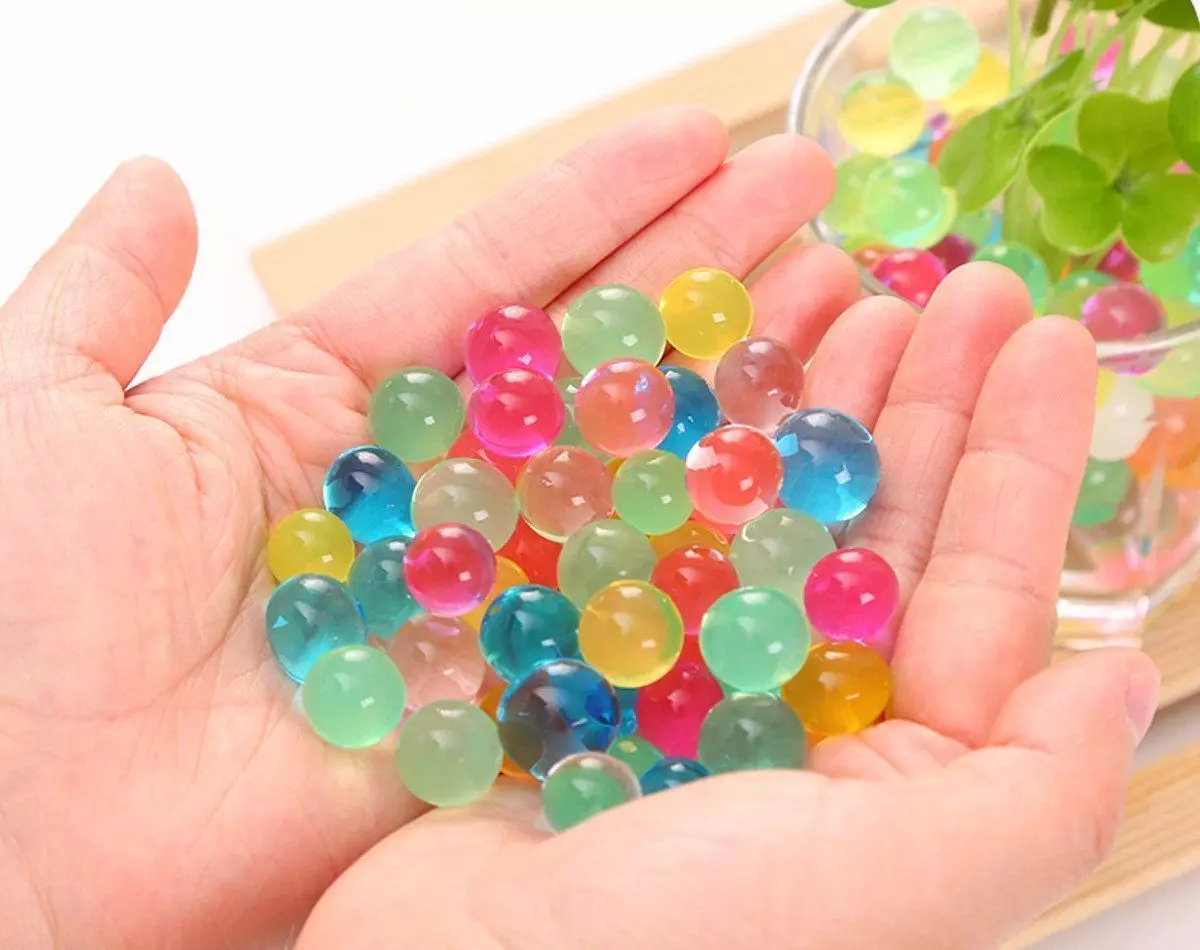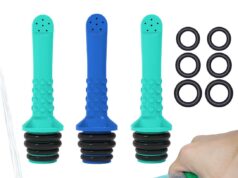Orbeez are polymer-based superabsorbent hydrogel beads which use the trade name ‘orbeez’ to describe their nature of expanding more than 150 times their volume once immersed in water. Due to these and other unique properties, they have found meaningful uses by many consumers. Mainly used by children as toys and by most adults for decorations, they have become increasingly popular. Due to their polymer-based structure, many people associate it to polythene which is toxic and non-biodegradable. This begs the question, are orbeez bad for the environment?
Determining the nature of orbeez, like reusability, its lifespan and if its biodegradable state could help shed more light with its environmental impact. A lot of peoples have had concerns if it’s toxic or can spread some diseases since their children mostly play with them as toys. Answering these questions, separating facts from myths and finding the origin of orbeez would help unveil their impact on the environment.
Orbeez Origin and Impact to Environment
Orbeez were first invented in the early 1960s for agricultural use, specifically for water retention in the soil especially nearing the dry season. Developed by the United States Department of Agriculture (USDA) who had previously used other methods to make similar products, they found the material useful. First, it was non-toxic and could retain lots of moisture, unlike the already used cellulose-based products.
Unlike cotton, tissue papers, nylon, and sponges developed in the early 1920s which could expand 11 times their own volume and weight under moderate pressure, the new ‘orbeez’ retained 100 times more. The downside of the new acrylonitrile polymer ingredients which used complex starch-based molecules in making the new ‘orbeez’ was it took longer to degrade than the previous cellulose-based products.
In a nutshell, the environmental impact of the ‘orbeez’ depending on its original form isn’t bad for the eco-system. Though it has a prolonged decomposition rate, it’s also developed as ‘water crystal gel’ used to retain water for young plants. The chemical composition used in making orbeez is also crucial to determine its toxicity and eco-system impact.
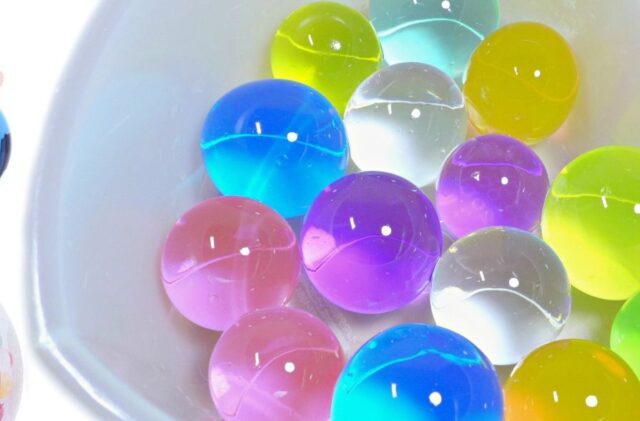
Chemical composition and Toxicity to Eco-system
Since the invention of orbeez in the 1960s, the use of synthetics in its manufacturing polyacrylates have gotten replaced with organic protein-based Polysaccharides. The change in chemical composition and technology use has not only made them more absorbent but easily degradable. Additionally, it has made them stronger for more applications rendering them more environmentally friendly.
Alhough some people argue that the coloring of the orbeez is hazardous and radioactive making them glow in the dark, this is not entirely true. Each orbeez has a unique size as well as properties, and some get dipped in the radioactive glow paint for preferred decorations. It’s also important to note that these glowing orbeez are advised not to be consumed as they may contain traces of radiation which may be harmful especially to children. The fact is, orbeez coloring comes from a sticky gel made of 60 to 70% non-toxic water.
The primary chemical compositions like polyacrylamide which are better known as Sodium polyacrylate, or Poly (methyl acrylate) are not considered as harsh chemicals and have domestic uses. Their environmental impact is minimal with applications like supplying water to miniature animals as an alternative to giving them water with a bowl. They have also been used for agricultural means as mentioned earlier with household potting, watering and retention of water in gardens has been an added use.
Additionally, they have had uses as artificial snow and decorations like glowing balls placed in vases. Their absorbent properties make them useful in making disposable diapers as enclosed small beads which swell once moist with jellies like softness, porous fillers, and sanitary napkins. They have also been used in controlling flood water or sometimes controlling the flow of water once placed in large bags.
As evident, hydrogel have been used in living organisms like small animals getting fed and plants being grown in them as water retention alternative makes them environmentally safe. Additionally, their massive use as flood control alternative means they have a friendlier impact on the eco-system for such an approved application.
Modern Uses and Impact to Environment
The popularization of the orbeez in recent years through children toys and contemporary decorative means has made their spread rampant. Orbeez’s range, however, might be advantageous especially if left in the garden after children play with them through their “nerf guns” as bullet projectiles. They surely will hold and retain moisture in the soil and early morning dew for plant use during dry seasons especially if they dissolve under the ground. Though it might take a lot of time for them to disappear naturally, the advantages would be worthwhile their stay.
Another environmental advantage hydro-gels have other than moisture retention in soil is their capability to grow plants on them. Since hydro-gels only retain and expel water from them and not any other chemical composed in them, they are safe to grow consumable produce. Breaking them down into a powdery form and applying them next to a plant or leaving it whole around a plant would help retain moisture and water for the plant for a more extended period. If growing a plant in a pottery vase using hydrogels, it’s advisable to add more water at its base for continued absorption to emulate natural setting of soil.
Environmental Contamination and spread
Hydrogels do not stain their color or spread any coloring as most people think since they only absorb water. Also, they don’t get messy when they break or scatter any toxins to the environment or the child when playing. Instead, if they break and spread in the carpet, cloth or vicinity they are in, one can wait for them to dry before cleaning it, simplifying the process.
Contrary to that opinion, if they are set in a cold environment or left with cold water in them, they can act as breeding ground for molds. They can also pick up dust on their surface along with bacteria in an unclean environment like toilets making them unsafe for children to play with them. Their slippery nature also makes them dangerous if spread across the house on slippery floors which can cause fatal accidents. Underinflated orbeez can also be hazardous to the plants in the environment as they could absorb lots of moisture around small plants, especially in a nursery damaging and stunting their growth.
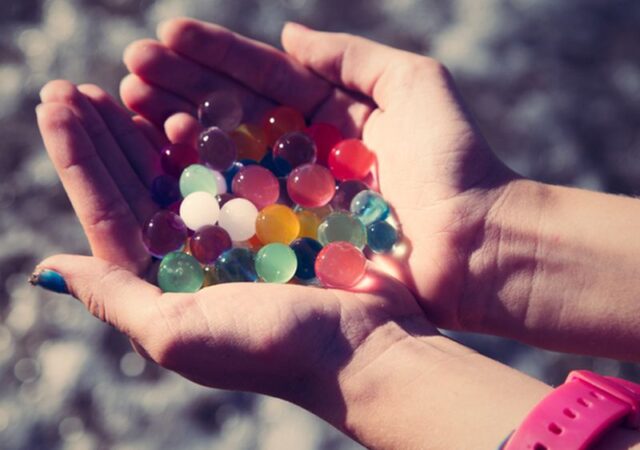
Biodegradable Nature of Orbeez
When buying an orbeez packet, it has a sign confirming their nature being 100% biodegradable. It’s continuous and approval use in agricultural fields especially flower firms is another evidence of its environmentally friendliness. Furthermore, they are used in flower shops to maintain high moisture levels for the plants which most people can’t buy if they contain toxins as they would otherwise smell. As toys for pets and kids, they are also sometimes unintentionally eaten due to but get easily expelled from the body after some time and if retained would dissolve and degrade in due time.
It’s important to note that orbeez are not suitable for children below five years of age for various reasons. First, though they may be non-toxic and biodegradable, their attractive colors may be easily confused as candy for minors making them to eat which can cause medical complications. Alternatively, they can choke on them if they are large enough and the same applies for pets like cats and puppies which have a small digestive duct.
According to orbeez instructions on the label when purchasing, they advise the user to use them with children above five years of age. Though if swallowed they don’t stick together in the digestive system or can’t be absorbed by the body, if taken in large quantities can be lethal even for adults. Since they also can’t be digested by the digestive tract of a human. Though the environmental impact of orbeez on large water body masses hasn’t been established yet, some of its properties on salty water against purified water speak volume as I will get into details later in the article.
Impact of Broken Orbeez beads on the Environment
Since a full-fledged hydrogel ball grows from a small ‘seed’ bead, it has been of great concern for lots of people if they break and the small particles continue growing. Such mythological thoughts are far from the truth as the orbeez balls aren’t filled with plenty of water inside but instead have a consistent gel-like structure holding the water molecules. Each strand of the polymerized substrate is compatible and interdependent on the other, once separated or the ball breaks, they can’t continue replicating individually. The environmental impact gets minimized, and eco-system made safe even if the beads break.
Interesting enough, if a bead which has absorbed water is left outside in the open environment under hot conditions or on exposed sunlight heat, they shrink with time. Same analogy goes for the broken beads which would eventually shrink from the exceptional ‘specs’ filled with water to dust like substrates if left in an open environment. The environmental effect would be better in fact as it would have added more absorption properties to the soil which lacked previously.
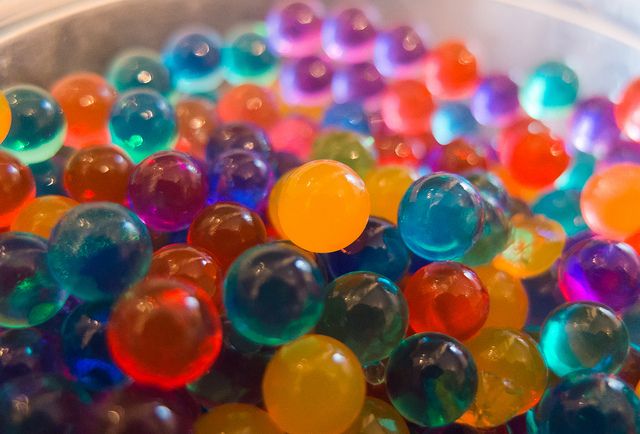
Impact of Broken Hydrogels on Pets, Plants, and Fish in the Environment
As mentioned earlier, orbeez aren’t absorbed nor digestible by living organisms like fish, pets or humans. Broken orbeez, on the other hand, maybe lethal if consumed in large quantities due to various supporting reasons. First is their moisture or water absorption properties which may cause internal injuries and discomforts. Due to their small miniature size having better absorption rate as their surface area, reducing them would absorb the surrounding moisture faster and quicker. Though it won’t be enough to cause dehydration, it still could create significant internal problems.
Secondly, orbeez grow faster and larger in warm or hot water which most animals have a warm body above 25 degrees and 37 degrees for humans. Orbeez’ growth rate gets increased in the stomach at a specific rate could inflate like a balloon in small animals which have consumed lots of it causing damage or even death. For fish in water, there is currently no fact of what could happen to them if the broken beads enter their gills and inflate in the process, but an imaginable circumstance would be their death.
It’s also important to remember there are certain bacterial and fungal organisms which grow on moist surfaces like molds which could spread in unwanted areas. For houses, continuous breakages of the orbeezswhich aren’t removed and stay in damp corners like bathrooms could act as breeding ground for molds and harmful bacteria. Additionally, if thrown in moist environments like swamps or drainage which regularly clog may become problematic. Their ability to retain moisture in addition to them breaking could make the surrounding environment a source of many illnesses.
Small animals like slugs which act as hosts for parasitic diseases could also find shelter in places where broken hydrogel beads are stored especially in wet seasons. The spread of water-borne infections could also result as a consequence causing a variety of diseases in the eco-system.
Removal of Water Crystals from the Environment
Hydrogel isn’t as easy to remove from the environment as most people think but can be done if proper measures are maintained. Since as stated before they can easily shrink in a natural setting, they have a minimal environmental impact but doesn’t mean they can’t affect the environment. Removing them artificially, for instance, if they are in a pool or drainage is to use alcoholic substrates which shrinks them by removing the water at a 25% rate. Use of salt also lets the water they have absorbed out making them shrink at a faster pace for easier removal.
Reusability of the Hydrogels
Reusability of any substance makes them environmentally friendly meaning they have a longer lifespan. Orbeez is indeed reusable to some degree which makes them environmentally friendly as they can be made to shrink and filled with water again. They, however, could become contaminated by substrates like bacteria, dust, and organisms like mold making them have a distinctive bad smell which requires their disposal.
Orbeez prolonged reusability can, therefore, get achieved by maintaining proper hygienic standards when using them. Proper placement into zipper bags having a lid to close them in could make them fresh enough for at least a week for play again. Adequately maintenance of the orbeez safeguards not only the environment but the surrounding eco-system including the user’s health.
The type of use of the water hydrogels, however, determines its lifespan. For instance, in light-up objects like glowing lamps, it may be usable for several months as long as its kept free from air.
For decorative uses, it may last longer between a year or two because of its constant exposure to light. When used in the agricultural sector maintained deep in the soil for water retention, it gets the most extended lifespan of between 7 to 9 years of continued use. The lengthy usability of an hydrogels doesn’t only yield an excellent result for the user, but also more extended benefits for the environment for it has a determined lifespan.
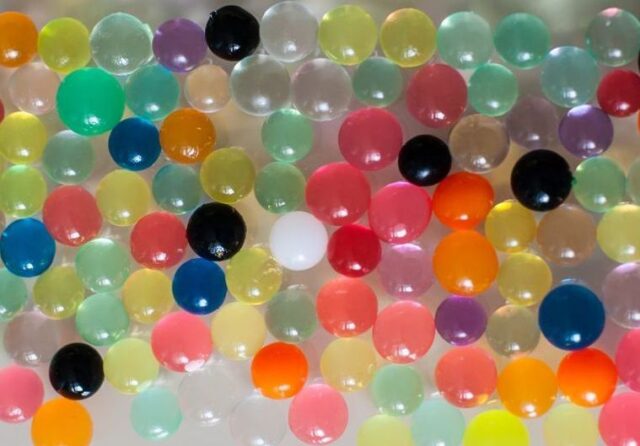
Getting Rid of Hydrogels from the Environment
Other than disposal, orbeez may be a nuisance if left alone in the environment. They can clog pipes, sinks, and toilet or the sewerage system if unchecked making the eco-system inhospitable. As mentioned earlier, the use of salt or rubbing alcohol could cause them to shrink but not get rid of them.
The two substances can only be used control for the orbeez like if its stuck in a child’s ear it can be removed by placing earbud cotton on its surface to shrink it taking only a few minutes. Use of chemicals like bicarbonate of soda in a combination of vinegar or bleach can make the orbeez dissolve caused by a chemical reaction between the components.
Such alternative measures mentioned above for dissolving orbeez makes them environmentally safe to use as they can quickly get eliminated if they get out of hand. It’s however not as simple as stated to get rid of the orbeez if they meet certain conditions. For instance, though salt may shrink them, small amounts in them keep them fresh for a long time prolonging their existence in the environment. Another factor is if they are held in a distilled water or get placed in an ionic or mineral content area in the atmosphere which can make them grow larger reaching 14mm in diameter. If these and other factors get met, the orbeez might prove hard to control as they would dominate the surrounding environment over time.
Conclusion
As previously mentioned earlier on the uses of hydrogel beads, they can be used for agricultural purposes but also as a safeguard for a consistent supply of water to your plants. For instance, if you have a plant vase in your house and you want to go for a vacation, it’s best if you put some hydrogel beads in the soil and plenty of water as it would retain moisture longer.
Another positive effect to the environment is for pets like ‘moist frog’ species which require constant moisture to either breed or can use an hydrogels instead. Environmentalists can also use hydrogel beads to safeguard endangered species which die out during dry seasons due to lack of enough moisture in the soil.
Due to the non-toxic nature of the orbeez, they have multiple uses coming in various types. Water orbs, polymer beads, hydro orbs, and jelly beads are but some examples which can grow over 200 times their volume and may get used in the above mentioned environmental uses. They can also be more dangerous for animals which consume them. According to Jenifer Lightdale who is a pediatric gastroenterologist, she claims it can grow large enough causing obstruction in the digestive system.
Though the environmental impact of orbeez is not adverse, its implications if not checked on living organisms like plants, pets, fish and humans may be harmful in the long run.

